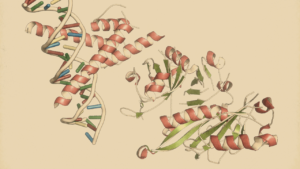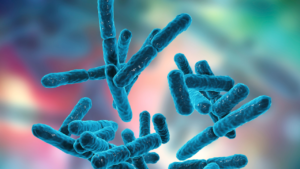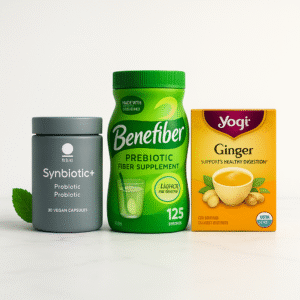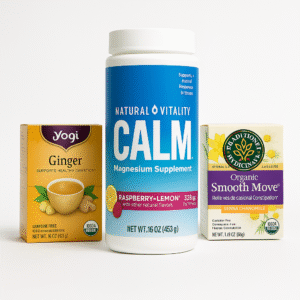Centella Asiatica: Unlocking The Beauty Secrets With Science
Centella asiatica, also called gotu kola or Indian pennywort, is a herb used in Ayurvedic and Chinese medicine for centuries.
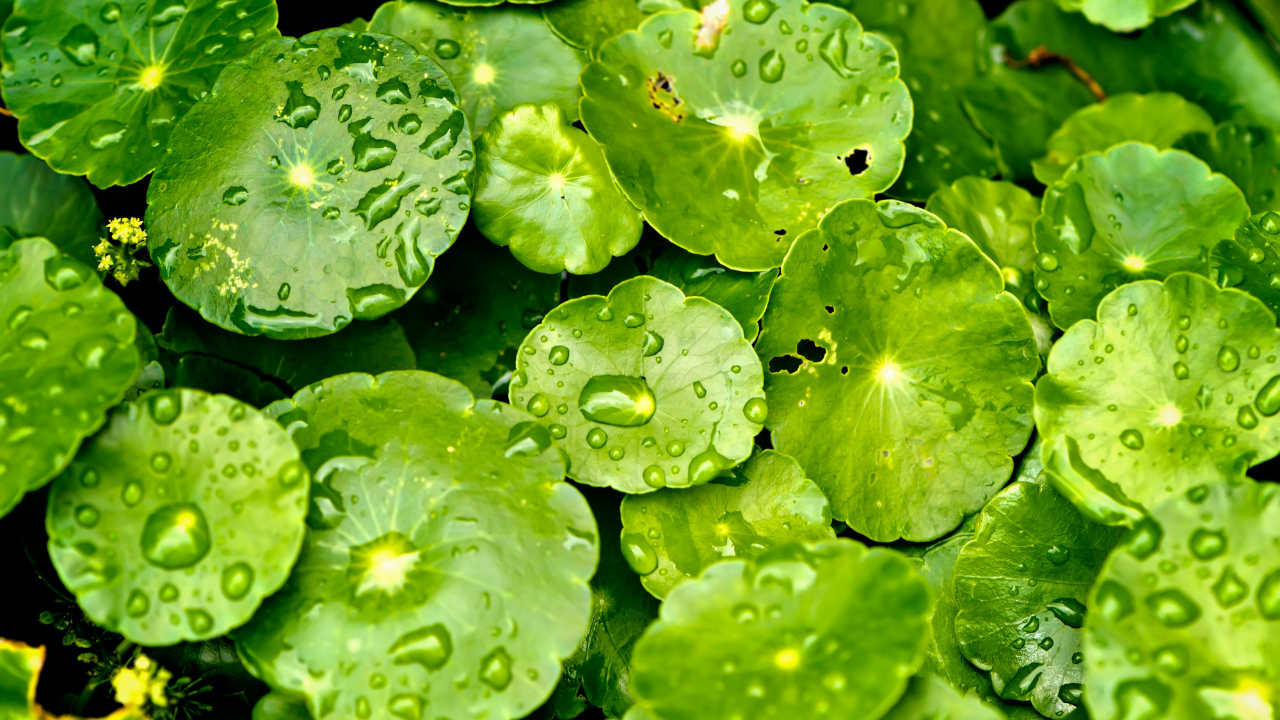
Centella asiatica (CA), also known as gotu kola or Indian pennywort, has gained significant recognition in the world of skincare ✅.
This remarkable herb has been used for centuries in traditional Ayurvedic and Chinese medicine for its healing properties.
In recent years, it has found its way into various skincare products, thanks to its numerous benefits for the skin. Centella Asiatica is a small, herbaceous plant that is native to the wetlands of Asia. Its leaves contain potent compounds that offer remarkable advantages when incorporated into skincare routines.
Keywords: Centella asiatica, gotu kola, Indian pennywort
Benefits of Centella Asiatica for Skincare
The benefits of Centella Asiatica for skincare can be summarized as follows:
✔️The triterpenoids found in CA have been found to have numerous positive impacts on neurological and skin ailments. These include mitigating inflammation, reducing oxidative stress, preventing cell death, and enhancing the functioning of mitochondria✅.
✔️Stimulation of collagen production and anti-inflammatory effects are exhibited by Centella Asiatica, which enhances the process of wound healing✅.
✔️The medicinal plant CA has a history of being used to cure diverse skin ailments and exhibits pharmacological benefits including anti-inflammatory, antioxidant, and wound-healing effects ✅.
✔️The therapeutic properties of CA and its triterpenes are beneficial for treating a variety of skin conditions, including acne, burns, atopic dermatitis, and wounds ✅.
✔️The skincare benefits of Centella Asiatica are attributed to its ability to modulate the immune system and possess anti-microbial properties✅.
✔️The presence of CA extract in cosmetic products enhances skin hydration and demonstrates anti-inflammatory characteristics ✅.
✔️The use of gelatin nanofibers containing Centella asiatica extract has been found to encourage the healing of dermal wounds and also possess antibacterial properties ✅.
✔️The callus extract of CA has advantageous properties for skincare products due to its ability to act as an antioxidant and combat skin aging. ✅.
✔️The use of Centella Asiatica can enhance skin hydration, reduce wrinkles, and produce effects similar to retinoids ✅.
✔️The phytosome derived from CA has the ability to reduce inflammation and prevent the production of inflammatory substances in individuals with atopic dermatitis ✅.
✔️Encapsulation of Centella asiatica ethanolic extract in chitosan nanoparticles has been found to enhance the growth of skin fibroblasts and keratinocytes, thus facilitating the regeneration of skin cells ✅.
✔️The cardiovascular protective effects of Centella Asiatica, such as anti-atherosclerotic, antihypertensive, and antioxidant activities, are beneficial for maintaining healthy skin ✅.
✔️The effectiveness, pharmacokinetics, and toxicity of Madecassoside, which is found in CA, have been studied for its potential in treating different skin disorders ✅.
✔️The liver is safeguarded from harm by Centella Asiatica leaf extract, which lessens oxidative stress and inflammation while boosting the activity of antioxidant enzymes ✅.
These benefits highlight the potential of CA as a valuable ingredient in skincare products.
However, it's important to note that individual experiences and results may vary. Further research and clinical studies are necessary to fully understand and unlock the complete range of benefits offered by Centella asiatica for skin care.
Keywords: Centella asiatica, Indian pennywort, antioxidant properties, anti-inflammatory properties.
Top 4 Centella Asiatica Products
How Centella Asiatica Extract Improves Skin Conditions
In skincare products, CA is utilized as an anti-aging remedy, moisturizer, and anti-inflammatory agent, and for treating scars, wounds, and atopic dermatitis.
Several studies have investigated the mechanisms and effects of Centella asiatica in skincare formulations. Here are some key findings:
✔️A study examined the role of Cica in skincare formulations and found that it has been used for its anti-aging properties, moisturizing effects, anti-inflammatory properties, and its ability to treat scars, wounds, and atopic dermatitis ✅.
✔️Cosmetic formulations containing CA extract (at concentrations of 2.5% and 5%) were found to improve skin moisture by increasing hydration and reducing water loss through the skin. These formulations also exhibited anti-inflammatory properties ✅.
✔️Optimizing the extraction process of CA resulted in higher extraction yields and polyphenol contents. The extracts obtained under optimal conditions showed improved cosmetic activities, including reduced melanin production and tyrosinase inhibitory activity ✅.
✔️C. asiatica has the potential to improve wound healing by promoting the production of collagen I, FGF, and VEGF. Additionally, it has been observed to possess anti-inflammatory properties, as evidenced by reductions in IL-1β, IL-6, TNFα, PGE2, COX-2, and LOX activity ✅.
✔️Compounds found in CA were shown to bind to specific enzymes (MMP3, MMP9, and MMP12) involved in skin aging. These compounds were found to inhibit MMP12 and potentially reduce the enzyme's activities ✅.
✔️Different extraction methods can be used to obtain bioactive compounds from Centella asiatica. These extracts have demonstrated antimicrobial activity both in vitro and in vivo. The safety and toxicology of Centella asiatica extract have also been studied ✅.
Keywords: Centella asiatica extract, redness, roughness
Common Skin Conditions Helped by Centella Asiatica in Skincare
Centella Asiatica has shown promising results in improving various common skin conditions. When incorporated into skincare products, it can provide targeted relief and nourishment. Let's explore some of the skin conditions that can benefit from Centella Asiatica and how it is used in specific products.
✔️Redness and Irritation: CA's soothing and anti-inflammatory properties make it effective in calming redness and irritation. Products like the Cosrx Centella Blemish Cream and Dr. Jart+ Cicapair Tiger Grass Color Correcting Treatment contain Centella Asiatica extract, which helps reduce redness and promote a more even skin tone. These products often use Centella asiatica as a key ingredient to provide targeted relief.
✔️Acne and Blemishes: Centella asiatica's antibacterial and wound-healing properties can aid in the treatment of acne and blemishes. The Purito Centella Green Level Buffet Serum is formulated with Centella Asiatica extract, providing hydration and soothing effects while helping to control breakouts. Its calming properties can assist in reducing the appearance of blemishes and promoting skin healing.
✔️Dry and Damaged Skin: Centella asiatica is also known for its moisturizing and repairing abilities, making it beneficial for dry and damaged skin. The La Roche-Posay Cicaplast Baume B5 Soothing Repairing Balm contains Centella Asiatica along with other ingredients to nourish and restore the skin's moisture barrier. This balm helps soothe dryness, repair skin damage, and improve overall skin texture.
Cosrx Centella Blemish Cream
Best features:
- Centella Asiatica Extract: Helps soothe and heal irritated skin
- Zinc Oxide: Provides anti-inflammatory and anti-bacterial benefits
- Niacinamide: Improves skin tone and texture
Reasons to purchase:
- Effective in reducing acne and blemishes
- Suitable for sensitive skin
- Lightweight, non-greasy formula

Purito Centella Green Level Buffet Serum
Best features:
- 49% CA Extract: Soothes and calms irritated skin
- Peptides: Promote collagen production and improve skin elasticity
- Niacinamide: Brightens and evens out skin tone
Reasons to purchase:
- Vegan and cruelty-free
- Free of harsh chemicals and fragrances
- Suitable for all skin types, including sensitive skin

Dr. Jart+ Cicapair Tiger Grass Color Correcting Treatment
Best features:
- CA Complex: Calms redness and irritation
- Color-changing capsules: Provide a natural, even skin tone
- SPF 30: Protects against harmful UV rays
Reasons to purchase:
- Instantly corrects redness and evens out skin tone
- Suitable for all skin types, especially those with redness or rosacea
- Can be used as a makeup primer or worn alone

La Roche-Posay Cicaplast Baume B5 Soothing Repairing Balm
Best features:
- Panthenol (Vitamin B5): Provides intense hydration and promotes skin healing
- Madecassoside: Soothes irritation and reduces inflammation
- Glycerin: Locks in moisture for long-lasting hydration
Reasons to purchase:
- Suitable for sensitive and irritated skin
- Can be used on the face and body
- Fragrance-free and non-greasy formula

Keywords: Centella asiatica, CA, skincare products, Cosrx Centella Blemish Cream, Purito Centella Green Level Buffet Serum, Dr. Jart+ Cicapair Tiger Grass Color Correcting Treatment, La Roche-Posay Cicaplast Baume B5 Soothing Repairing Balm
Potential Side Effects of Using Centella asiatica in High Doses
✔️Contact Dermatitis:
One study reported that Madecassol, a product containing C. asiatica, can cause contact dermatitis. It is essential to be cautious and monitor for any skin reactions when using products that contain Centella asiatica ✅.
✔️Fertility and Reproductive Effects:
In an experimental study, crude extract of CA and its derivatives (isothankuniside and BK compound) showed antifertility effects, resulting in sterile matings. However, the exact mechanism of action of these compounds is yet to be fully understood ✅.
✔️Metabolic Interactions:
Another study investigated the pharmacokinetics of the total triterpenic fraction of CA in healthy volunteers. It found that chronic treatment with higher doses led to significantly higher peak plasma concentrations and extended half-life. This phenomenon could be attributed to metabolic interactions between asiatic acid and asiaticoside, a component of Centella asiatica that is transformed into asiatic acid in the body ✅.
✔️Duration of Use:
Based on literature, prolonged use of CA for more than 6 weeks is not recommended. It is advised that individuals who have used Centella asiatica for an extended period should take a 2-week break before resuming its use ✅.
✔️Toxicity:
Studies have shown that standardized CA extracts and asiaticoside were well-tolerated in experimental animals, especially when administered orally. Asiaticoside did not exhibit any signs of toxicity up to a dose of 1 mg/kg when taken orally. However, higher doses administered through intramuscular application in mice and rabbits resulted in toxic effects at doses of 40-50 mg/kg ✅.
✔️Dosage:
The recommended daily CA intake is 600 mg, which can be obtained from dried leaves, capsules, or infusion. Capsules range from 300 mg to 680 mg and should be taken three times a day. There are also other options like Madecassol tablets, tincture, and Emdecassol ointment ✅.
To make gotu kola tea, one can add 1-2 teaspoons (5-10 g) of dried leaves to 2/3 cup (150 ml) of boiling water and let it steep for 10-15 minutes. It is recommended to consume three cups (750 ml) per day. Alternatively, a fluid extract (1/2-1 teaspoon or 3-5 ml per day) or a tincture (2-4 teaspoons or 10-20 ml per day) may be suggested. In modern herbal medicine, standardized CA extract with up to 100% total saponins (triterpenoids) and 60 mg once or twice a day is commonly used ✅.
Keywords: Centella asiatica, side effects, high doses
Comparison with Other Herbal Remedies for Skincare
✔️Centella asiatica:
CA is renowned for its soothing and healing properties.
It helps calm inflammation, promote skin regeneration, and improve overall skin health.
CA is often used in skincare products to target specific skin concerns such as redness, irritation, and acne.
✔️Aloe Vera:
Aloe vera is a succulent plant known for its hydrating and moisturizing abilities.
It contains antioxidants and vitamins that nourish the skin and support its natural healing process.
Aloe vera is commonly used to soothe sunburns, dryness, and minor skin irritations.
✔️Chamomile:
Chamomile is a gentle herb with anti-inflammatory and antioxidant properties.
It is known for its calming effects on the skin, reducing redness and irritation.
Chamomile is often used in skincare products to soothe sensitive or reactive skin and promote a sense of relaxation.
CA's unique compounds make it particularly effective in addressing skin conditions such as redness, acne, and damaged skin, while aloe vera excels in providing hydration and moisturization. Chamomile, on the other hand, is well-suited for soothing sensitive skin and promoting a sense of tranquility.
It's important to note that individual skin types and preferences may influence which herbal remedy is most suitable for each person.
The Bottom Line
Centella asiatica is a powerful herb that has been used for centuries in traditional medicine for its healing properties.
It possesses antioxidant, anti-inflammatory, and soothing effects, making it ideal for addressing redness, irritation, and roughness.
Skincare products such as Cosrx Centella Blemish Cream, Purito Centella Green Level Buffet Serum, Dr. Jart+ Cicapair Tiger Grass Color Correcting Treatment, and La Roche-Posay Cicaplast Baume B5 Soothing Repairing Balm harness the benefits of Centella asiatica for targeted skincare solutions.
It's important to follow recommended usage guidelines to avoid potential side effects, especially when using high doses of Centella asiatica.
In comparison to other herbal remedies like aloe vera and chamomile, Centella asiatica stands out for its specific skincare applications and targeted benefits.
Frequently Asked Questions
What skin conditions can Centella asiatica help with?
Is Centella asiatica safe to use on the skin?
What is Centella asiatica, and what does it do for the skin?
How can I incorporate Centella asiatica into my skincare routine?
References
Fitnature uses only high-quality sources, including peer-reviewed studies, to support the facts within our articles. Read our editorial process to learn more about how we fact-check and keep our content accurate, reliable, and trustworthy.
- A, Ratz-Łyko, et al. “Moisturizing and Antiinflammatory Properties of Cosmetic Formulations Containing Centella Asiatica Extract. – Abstract – Europe PMC.” Indian Journal of Pharmaceutical Sciences, vol. 78, no. 1, pp. 27–33, https://doi.org/10.4103/0250-474x.180247. Accessed 22 May 2023.
- Arribas-López, Elena, et al. “A Systematic Review of the Effect of Centella Asiatica on Wound Healing.” International Journal of Environmental Research and Public Health, vol. 19, no. 6, Mar. 2022, p. 3266, https://doi.org/10.3390/ijerph19063266.
- Buranasudja, Visarut, et al. “Insights into Antioxidant Activities and Anti-Skin-Aging Potential of Callus Extract from Centella Asiatica (L.).” Scientific Reports, vol. 11, no. 1, June 2021, pp. 1–16, https://doi.org/10.1038/s41598-021-92958-7.
- Choi, Myung-Joo, et al. “Protective Effects of Centella Asiatica Leaf Extract on Dimethylnitrosamine‑induced Liver Injury in Rats.” Molecular Medicine Reports, vol. 14, no. 5, Nov. 2016, pp. 4521–28, https://doi.org/10.3892/mmr.2016.5809.
- Dutta, T., and U. P. Basu. “Crude Extract of Centella Asiatica and Products Derived from Its Glycosides as Oral Antifertility Agents – PubMed.” Indian Journal of Experimental Biology, vol. 6, no. 3, July 1968.
- Eun, H. C., and A. Y. Lee. “Contact Dermatitis Due to Madecassol – PubMed.” Contact Dermatitis, vol. 13, no. 5, Nov. 1985, https://doi.org/10.1111/j.1600-0536.1985.tb02584.x.
- Grimaldi, R., et al. “Pharmacokinetics of the Total Triterpenic Fraction of Centella Asiatica after Single and Multiple Administrations to Healthy Volunteers. A New Assay for Asiatic Acid – PubMed.” Journal of Ethnopharmacology, vol. 28, no. 2, Feb. 1990, https://doi.org/10.1016/0378-8741(90)90033-p.
- Harun, Nurul Hikmah, et al. “KoreaMed Synapse.” Natural Product Sciences, vol. 25, no. 2, pp. 92–102, https://doi.org/10.20307/nps.2019.25.2.92. Accessed 22 May 2023.
- Ho, Park Ju, et al. “Anti-Inflammatory Effect of Centella Asiatica Phytosome in a Mouse Model of Phthalic Anhydride-Induced Atopic Dermatitis – PubMed.” Phytomedicine : International Journal of Phytotherapy and Phytopharmacology, vol. 43, Apr. 2018, https://doi.org/10.1016/j.phymed.2018.04.013.
- Idris, Farhana Nazira, and Masrina Mohd Nadzir. “Comparative Studies on Different Extraction Methods of Centella Asiatica and Extracts Bioactive Compounds Effects on Antimicrobial Activities.” Antibiotics (Basel, Switzerland), vol. 10, no. 4, Apr. 2021, p. 457, https://doi.org/10.3390/antibiotics10040457.
- Kartnig, T. “Clinical Applications of Centella Asiatica (L.) Urb.” Herbs, Spices, and Medicinal Plants : Recent Advances in Botany, Horticulture, and Pharmacology (USA). Accessed 22 May 2023.
- Kongkaew, Chuenjid, et al. “Efficacy and Safety of Centella Asiatica ( L.) Urb. on Wrinkles: A Systematic Review of Published Data and Network Meta-Analysis – PubMed.” Journal of Cosmetic Science, vol. 71, no. 6, Dec. 2020.
- Krisnamurti, Gabriella Chandrakirana, and Dewi Ratih Tirto Sari. “Does Centella Asiatica Have Antiaging Activity in Skincare Products?” Proceedings of the 2nd International Conference on Education and Technology (ICETECH 2021), Atlantis Press, 2022, http://dx.doi.org/10.2991/assehr.k.220103.035. Accessed 22 May 2023.
- Park, Kyoung Sik. “Pharmacological Effects of Centella Asiatica on Skin Diseases: Evidence and Possible Mechanisms.” Evidence-Based Complementary and Alternative Medicine : eCAM, vol. 2021, Nov. 2021, p. 5462633, https://doi.org/10.1155/2021/5462633.
- Razali, Nur Nadia Mohd, et al. “Cardiovascular Protective Effects of Centella Asiatica and Its Triterpenes: A Review – PubMed.” Planta Medica, vol. 85, no. 16, Nov. 2019, https://doi.org/10.1055/a-1008-6138.
- Seo, S. B. “Improving Cosmetic Activity by Optimizing Centella Asiatica Extraction Process – S.B. Seo, Y.M. Kim, 2019.” Natural Product Communications, July 2019, https://doi.org/10.1177_1934578X19867188.
- Sherban, Alexander, and Jordan V. Wang. “Role of Cica ( Centella Asiatica) in Skincare Formulations: Examination of a Popular Ingredient – PubMed.” Skinmed, vol. 20, no. 2, Apr. 2022.
- Stafford, Gary I., et al. “Review on Plants with CNS-Effects Used in Traditional South African Medicine against Mental Diseases – PubMed.” Journal of Ethnopharmacology, vol. 119, no. 3, Oct. 2008, https://doi.org/10.1016/j.jep.2008.08.010.
- Sun, Boju, et al. “Therapeutic Potential of Centella Asiatica and Its Triterpenes: A Review.” Frontiers in Pharmacology, vol. 11, Sept. 2020, p. 568032, https://doi.org/10.3389/fphar.2020.568032.
- Tan, Swee Ching, et al. “Actions and Therapeutic Potential of Madecassoside and Other Major Constituents of Centella Asiatica: A Review.” Applied Sciences, vol. 11, no. 18, Sept. 2021, https://doi.org/10.3390/app11188475.
- Torbati, Farshad Abedi, et al. “Ethnobotany, Phytochemistry and Pharmacological Features of Centella Asiatica: A Comprehensive Review – PubMed.” Advances in Experimental Medicine and Biology, vol. 1308, Jan. 2021, https://doi.org/10.1007/978-3-030-64872-5_25.
- Yao, Chun-Hsu, et al. “Wound-Healing Effect of Electrospun Gelatin Nanofibres Containing Centella Asiatica Extract in a Rat Model – PubMed.” Journal of Tissue Engineering and Regenerative Medicine, vol. 11, no. 3, Mar. 2017, https://doi.org/10.1002/term.1992.
- Yulianti, Linda, et al. “Effects of Centella Asiatica Ethanolic Extract Encapsulated in Chitosan Nanoparticles on Proliferation Activity of Skin Fibroblasts and Keratinocytes, Type I and III Collagen Synthesis and Aquaporin 3 Expression In Vitro.” Journal of Pharmaceutical and Biomedical Sciences, vol. 6, no. 5, May 2016.
Review date not set.
How we reviewed this article:
Latest on:
